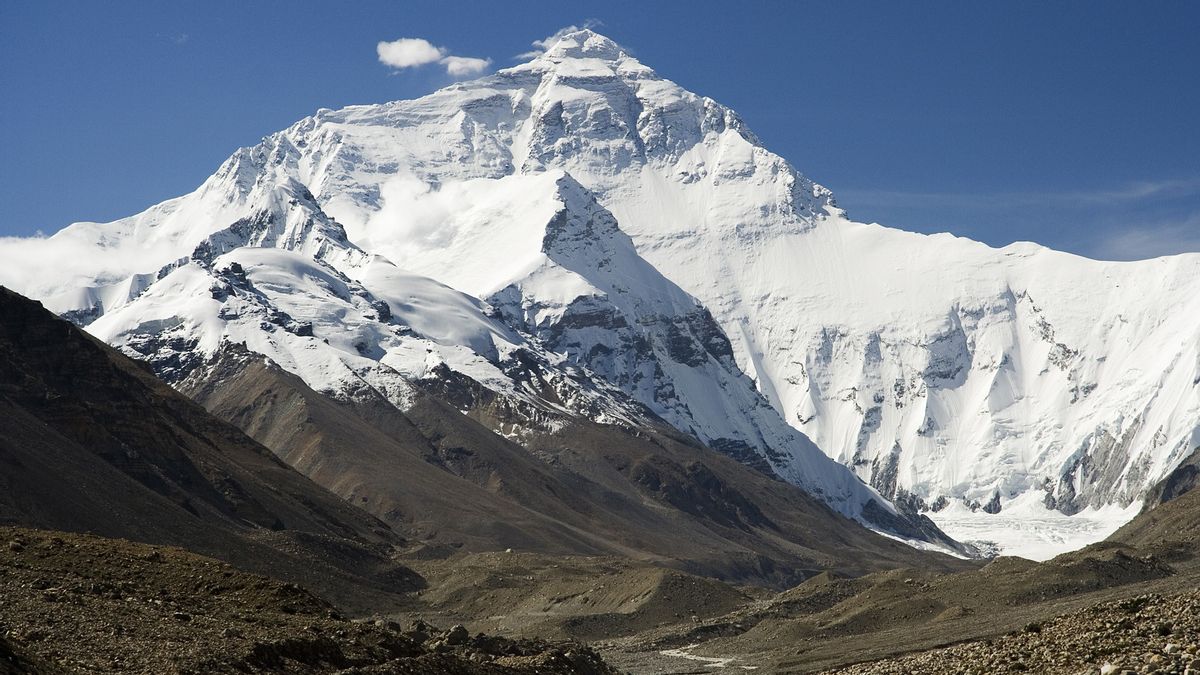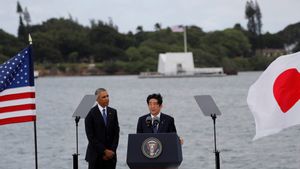JAKARTA - At exactly 11.30 today, May 29, 67 years ago or in 1953, Edmund Hillary, from New Zealand and Tenzing Norgay from Nepal, became the first explorers to conquer the world's highest mountain peak, Everest. How did the story of the two climbers' struggle to reach one of the most dangerous mountain peaks?
This mountain, which has an altitude of 8,848 meters or 29,029 feet above sea level, is located in the border region between Nepal and Tibet. The Tibetans call this mountain Chomo Lungma which means the Goddess of the Earth.
Meanwhile, the British named the mountain after a 19th century surveyor, Sir George Everest. The terrain of Mount Everest is difficult to conquer. Apart from being very cold, the oxygen levels were so low that the weather was unpredictable.
Quoting History, efforts to conquer the summit of Everest have been carried out since 1921 by British explorers. By then they had walked 400 miles across the Tibetan plateau to the foot of the mountain.
However, a raging storm forced them to cancel the climb. Nevertheless, one of the climbers, George Leigh Mallory, managed to open a possible route to climb.
One year later, Mallory tried his luck again with George Finch and Geoffrey Bruce. They managed to reach an altitude of 27,000 feet. But the catastrophe happened, at least seven Sherpas (called the guide for climbing Mount Everest) were killed in an avalanche.
Then, in 1925, the third expedition from England was resumed. Climber Edward Norton managed to reach higher than the second climb of 28,128 feet without using artificial oxygen. Only 900 feet left to reach the highest land on Earth.
Four days later, Mallory and Andrew Irvine forced their climb to the top and never returned. Both died. In 1999, Mallory's partially intact body was found on Everest. Whether he or Irvine had reached the top or not remains a mystery.
Britain returned to expeditions in 1950 and 1951, after World War II was over. The journey that was taken via the southeast route, Ridge, was also fruitless. A year later, Swiss explorer Raymond Lambertt was guided by Tenzing Norgay almost to the top at 28,210 feet. However, they had to return for lack of supplies.
Embark on a massive expeditionSurprised by the success of the Swiss expedition, England did not want to lose. They staged a massive expedition in 1953 under the command of Colonel John Hunt.
Apart from preparing complete supplies such as boots and special clothes, portable radio equipment, oxygen equipment, and preparing experienced Sherpas like Tenzing Norgay, this expedition also netted skilled climbers from British Commonwealth countries. From there the New Zealand hikers George Lowe and Edmund Hillary were chosen.

In May, this great expedition began. A new road was made through the Khumbu Icefall. On May 26, Chales Evans and Tom Bourillon began climbing the summit and reached only 300 feet before actually arriving. But they had to go back because one of their oxygen devices didn't work.
On May 28, it was Tenzing and Hillary's turn to try their luck. They did not immediately break through and climb to the top, but first set up tents at an altitude of 27,900 feet. After spending the night, they walked slowly and reached the southern peak at 9 am.
They continued climbing. Taking a step, Hillary shook her face to sigh - this technique became known as the "Hillary Step." He threw the rope and Norgay followed behind him. At around 11 and 30 minutes, the climbers finally arrived at the top of the world.
News of this success began to be conveyed via radio posts at the Namche Bazar and then sent to London. Soon, Queen Elizabeth II learned of this accomplishment ahead of her coronation day on June 1. The next day the news spread around the world and is remembered to this day.
The English, Chinese, Japanese, Arabic, and French versions are automatically generated by the AI. So there may still be inaccuracies in translating, please always see Indonesian as our main language. (system supported by DigitalSiber.id)










